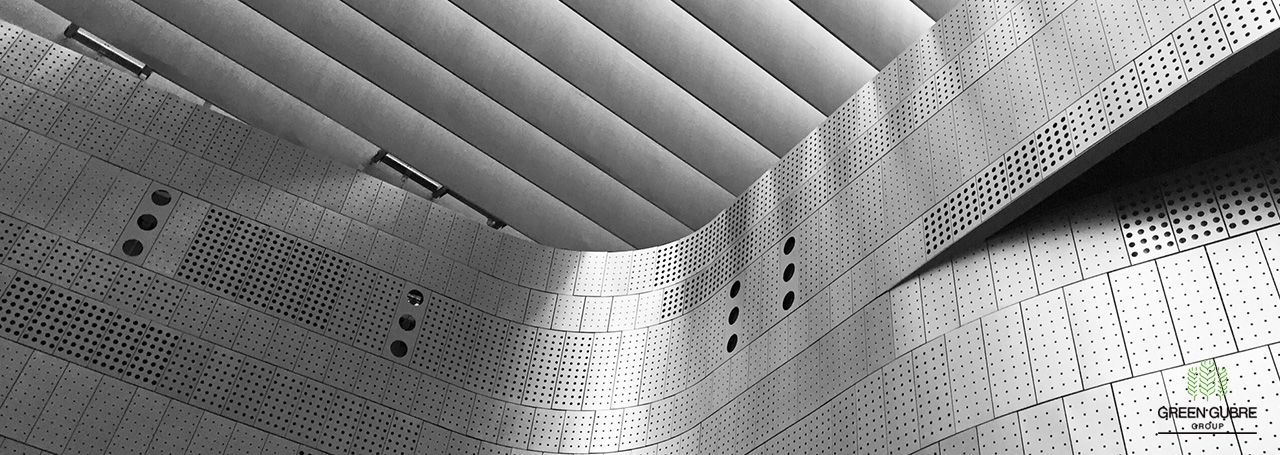The Role of Aluminum in Lightweight Construction
The Role of Aluminum in Lightweight Construction

Aluminum is a versatile and lightweight material that has revolutionized the construction industry. Known for its high strength-to-weight ratio, corrosion resistance, and ease of fabrication, aluminum is used in a wide range of construction applications, from building facades to structural components. As sustainable construction becomes a priority, aluminum’s recyclability and energy-efficient properties have made it an essential material in modern construction projects.
Why
Aluminum is a Key Material in Construction:
Aluminum’s unique properties make it ideal for use in construction. Its lightweight nature allows for easier transportation and handling, reducing the overall weight of structures without compromising on strength. Additionally, aluminum’s resistance to corrosion ensures that it maintains its structural integrity even in harsh environments, such as coastal or industrial areas. These qualities, combined with its recyclability, make aluminum a preferred choice for architects, engineers, and builders focused on sustainability and performance.
Key Benefits of
Aluminum in Construction:
1. Lightweight with High Strength:
Aluminum’s strength-to-weight ratio is one of its greatest advantages. It is much lighter than steel or concrete, making it easier to work with, while still providing the necessary structural support. This allows for the construction of taller, more intricate buildings without adding excessive weight to the foundation.
2. Corrosion Resistance:
Aluminum naturally forms a protective oxide layer when exposed to air, which prevents it from corroding. This makes it ideal for use in outdoor structures, roofing, and facades, particularly in environments exposed to moisture, salt, or industrial pollutants. The corrosion-resistant properties of aluminum help extend the lifespan of buildings and reduce maintenance costs.
3. Sustainability and Recyclability:
Aluminum is 100% recyclable without losing its properties. Recycling aluminum requires only 5% of the energy needed to produce primary aluminum from bauxite ore. This makes it an eco-friendly choice for construction projects that prioritize sustainability. Additionally, aluminum’s lightweight nature contributes to energy savings during transportation and installation.
4. Versatility in Design:
Aluminum is highly malleable, allowing it to be shaped into various forms and sizes. It can be extruded, rolled, or cast into intricate designs, making it suitable for both functional and aesthetic purposes. Architects and designers favor aluminum for its ability to create sleek, modern facades, curtain walls, and window frames that enhance a building’s appearance while maintaining durability.
5. Energy Efficiency:
Aluminum’s thermal properties make it an excellent material for energy-efficient building designs. Aluminum window frames and curtain walls can be fitted with thermal breaks to reduce heat transfer, improving a building’s insulation and reducing energy consumption. This contributes to the overall energy efficiency of the structure, helping builders meet green building certifications.
Applications of
Aluminum in Construction:
1. Building Facades and Curtain Walls:
Aluminum is commonly used in modern building facades and curtain walls due to its combination of strength, lightweight nature, and aesthetic appeal. These facades can be designed with sleek, contemporary finishes while providing durability and resistance to the elements. Aluminum’s corrosion-resistant properties ensure that facades maintain their appearance over time with minimal maintenance.
2. Window Frames and Doors:
Aluminum window frames and doors are popular in both residential and commercial buildings due to their strength, durability, and energy efficiency. They are lightweight, making installation easier, and their resistance to corrosion ensures longevity. Additionally, aluminum frames can accommodate large panes of glass, allowing for more natural light and energy savings.
3. Roofing and Cladding:
Aluminum roofing and cladding systems are ideal for buildings in harsh environments. Its lightweight nature reduces the structural load on buildings, while its corrosion-resistant properties ensure long-term protection from the elements. Aluminum cladding also offers flexibility in design, allowing architects to create innovative and aesthetically pleasing exteriors.
4. Structural Components:
Aluminum is used in load-bearing structural components in bridges, stadiums, and high-rise buildings. Its strength-to-weight ratio allows for the construction of large, complex structures while minimizing the overall weight. This is particularly important in earthquake-prone areas where reducing the weight of a structure can enhance its stability and safety.
5. Transportation Infrastructure:
In addition to buildings, aluminum plays a vital role in the construction of transportation infrastructure such as bridges, tunnels, and railway stations. Its lightweight properties reduce the overall load on bridges and overpasses, while its resistance to corrosion ensures longevity in infrastructure projects exposed to environmental elements.
Aluminum’s Role in Sustainable Building Practices:
The construction industry is increasingly focusing on sustainable building practices to reduce environmental impact. Aluminum’s recyclability and energy efficiency align with these goals. By using recycled aluminum in construction, builders can reduce greenhouse gas emissions and energy consumption associated with raw material extraction. Aluminum also contributes to green building certifications, such as LEED, by improving a building’s energy efficiency and sustainability.
Emerging Trends in
Aluminum Use in Construction:
1. Modular Construction:
Aluminum is increasingly being used in modular construction, where building components are prefabricated off-site and assembled on-site. Its lightweight nature and ease of fabrication make it an ideal material for this type of construction, which is gaining popularity due to its speed, efficiency, and reduced environmental impact.
2. Smart Building Technologies:
Aluminum is also being integrated into smart building technologies, where it is used in the construction of energy-efficient, automated structures. Aluminum’s thermal properties and versatility make it a valuable material for smart windows, curtain walls, and energy-efficient building components.
3. Advanced Coatings and Surface Treatments:
New coatings and surface treatments are being developed to enhance aluminum’s performance in construction. These treatments improve aluminum’s resistance to UV radiation, enhance its thermal insulation properties, and reduce maintenance requirements, further extending the lifespan of aluminum structures.
Conclusion:
Aluminum has become a cornerstone material in modern construction, offering unmatched benefits in terms of strength, durability, and sustainability. From sleek facades and energy-efficient windows to structural components and transportation infrastructure, aluminum’s versatility makes it an indispensable material in the construction industry. As the demand for sustainable, energy-efficient buildings continues to grow, aluminum will remain a key material in shaping the future of construction.




